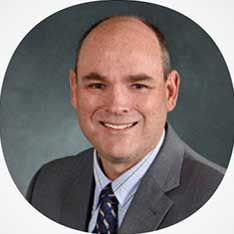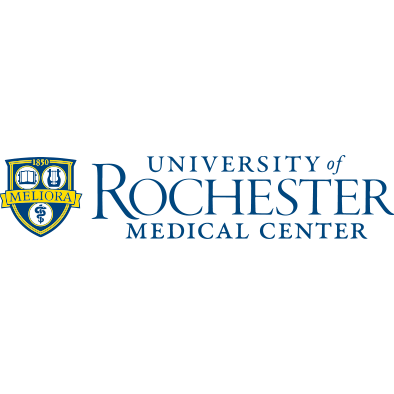Quest for IV safety leads from clean room to Capitol Hill

“If I had a crystal ball to look into the future, I’d want to see an IV workflow system in every hospital that compounds sterile products.”
On this page:
- The Challenge
- Q&A
- Vital Statistics
- Core Technology
When it comes to patient safety, sterile compounding is among the highest-risk activities performed by health-system pharmacies. The quest for solutions to reduce this patient risk led Dave Webster to become an early adopter of sterile compounding automation—as well as a noted author, lecturer, and advocate on the subject.
Among other responsibilities, Webster leads sterile compounding operations across multiple sites for the University of Rochester Medical Center. To date, fully automated robots have produced over 170,000 doses for the medical center, including patient-specific oncology doses, with IV workflow devices producing an additional 3,000 doses per month.
Q&A
-
Q: How have perceptions of sterile compounding technology changed among health-system pharmacists since you became an early adopter?
A: At first, there was skepticism, partly driven by the level of technology available at that time. I heard comments such as: "Do we really need technology in this space? How do you introduce technology in a clean room setting? Okay, technology may be important, but we can’t be slowed down. I have this relentless workload we have to keep up with."
The conversation evolved to become more supportive, but with some hesitancy about whether the technology had advanced enough, and also figuring out the financial justification for the investment.
More recently, I’ve seen healthy debates about the technologies used. It is encouraging to see the debate move away from the question of need for technology to finding the best solution available.
-
Q: What debates about foundational technologies are you seeing?
A: Well, I think everyone agrees that barcode scanning and digital image capture is helpful in assisting pharmacists in the clean room as far as improving safety.
But there still is a bit of debate around the role of gravimetrics. Some individuals question whether IV preps need to be weighed before and after: "Do we really need to go that far?"
I’ve always been a proponent of all three of those technologies to the patient safety formula in sterile compounding. More pharmacy directors and leaders are moving in that direction to make this process as safe as possible. That’s where all three components become important.
-
Q: When building the business case for sterile compounding technology, what key dimensions should be considered?
A: The reason to look at technology is patient safety. But certainly there’s the financial piece, looking at return on investment and all that entails. Often, the financial argument is the hardest to make.
The challenges around sterile compounding can be different for each institution. Some facilities don’t have the space or feel they don’t have the right infrastructure to support it. Larger facilities, like ours at Strong Memorial Hospital, are always going to have a need for high-volume sterile compounding. So the idea of leveraging technology becomes an easier discussion versus a smaller hospital that has intermittent needs and is unable to invest the necessary capital.
-
Q: What are the arguments for insourcing vs. outsourcing sterile compounding products?
A: My argument is always if you're investing in outsourcing, you need to take a look at what you would save by bringing that in house. You need to look at the financial perspective and the safety perspective.
Many institutions—and we were one of them—rely heavily on compounding pharmacies and 503B sites. I think the NECC (New England Compounding Center) situation exposed a lot of that overdependence, but there’s still a heavy reliance by many hospitals.
Some pharmacy leaders I’ve talked to are unwilling to insource because they feel compounding pharmacies have put new quality controls in place and that the FDA is watching over them.
Well, that’s true to some degree. But the level of quality reports and recalls still show a lot of issues. While some compounding pharmacies do an excellent job and are very good about quality measures, there’s still a spectrum of issues among outsourcers related to quality control and adhering to regulations.
-
Q: Why have you been so active in meeting with regulatory agencies on IV technology?
A: I’ve been working with other pharmacy leaders and patient safety advocates from across the country to meet with government leaders and organizations such as the FDA in order to move the dial on their understanding of, and for them to weigh in, on sterile compounding technology.
We’re very supportive of the Drug Quality and Security Act (DQSA) and establishment of the 503A and 503B spaces. I think it was necessary to create that guidance to protect people, which should remain the focus. The regulations provide a good framework. But a lot of avenues are available to make the system even safer.
Our role is to make sure the FDA understands we’re supportive of this, and that we want to guide hospitals and healthcare systems to the best possible solution to protect patients. We believe that adoption of technology in a smart way can be part of that solution. I think we've made that point strongly, and it has led to some great dialog with FDA leaders.
-
Q: What issues do you see with the current FDA guidance?
A: Current regulations don’t address technology in any way. And that’s a problem. First, technology can provide a path to creating a safer, more robust quality assurance around sterile compounding. And second, because technology is not addressed by regulatory bodies, I think it actually hinders broad technology adoption.
It’s easy for those who read the regulation to say, "Well, the FDA doesn’t say anything about technology. Why should I invest in something the FDA not only doesn’t mention, but could provide future guidance that would be contradictory to current technology?"
None of us believe that would be the case, and there is no indication that the FDA would follow that path. But sometimes there’s fear that because it is not being addressed, it could be a hindrance to adopting new technology.
-
Q: Since you’ve started working on sterile compounding issues, what has been your proudest moment?
A: In a general sense, the proudest part of this whole journey for me is seeing our team understand why they're doing what they're doing with this technology and why it's important. We have an amazing team here and they’ve been engaged in the patient safety aspects of the technology.
Because the technology is still new, it’s easy to fall into the temptation for workarounds. Our team has avoided those pitfalls. They’ve welcomed the technology and adopted it in a positive way. And I couldn't be prouder of our IV compounding team and leaders in that area. They’ve embraced the technology and want to make it even better.
More specifically, the day we went live with the IV workflow devices was a really proud moment. While robots are cool and fun to watch, they offer lots of great advantages. The idea that we now have technology that can make almost any compound and still have the same robust patient safety checks is exciting to me. If I had a crystal ball to look into the future, I’d want to see an IV workflow system in every hospital that compounds sterile products.
Vital Statistics

University of Rochester Medical Center
- Staff beds1,333
- Employees15,066
- Medical Staff3,054
- Hospitals7
- Physician Group4
- Ambulatory Surgery Center3
- Imaging Center9
- Home Health Agency2
- Hospice1
- Skilled Nursing Facility5
- Urgent Care Clinic10
 Back to Customer Stories
Back to Customer Stories